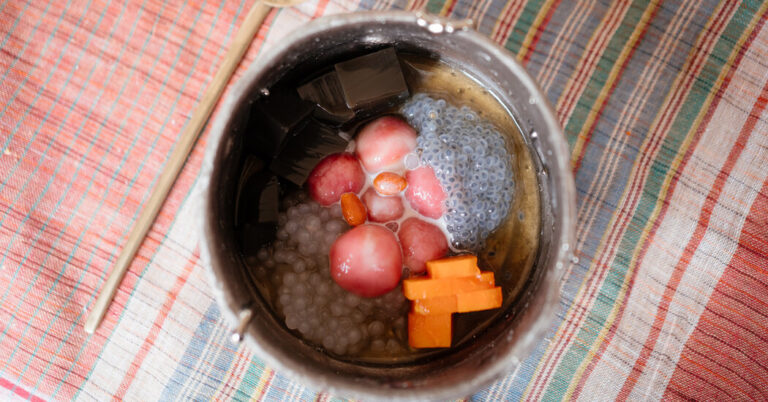Here is the plain text result:
On Saturday evening, Kenza Fourati and her two zealous children hovered around a decorative Ramadan calendar they put up about a month ago in their Brooklyn home. “Yallah, let’s turn it around,” Ms. Fourati said. Together, they flipped it and revealed the other side: “Eid Mubarak. The Mohyeldin Fourati family.” The sun had just set, the crescent moon was spotted and it was confirmed: Eid al-Fitr, the holiday that marks the end of the holy month of fasting for Muslims, would be on Sunday.
Decorating the house during Ramadan and Eid is a relatively new tradition that Ms. Fourati, a model and the co-founder of a brand called Osay, has adopted. As her children have been getting older, they have been asking more questions about their faith.
In Tunis, where Ms. Fourati, 39, grew up with a large family, Ramadan celebrations were all around her. On the night before Eid, she recalled running around the streets surrounding her home with her friends as fireworks lit up the sky.
Growing up in the 1980s on an island in Bangladesh called Sandwip, Mahima Begum and her five siblings would rush to the local mela, or festival, on the morning of Eid, where they purchased colorful bangles and Bengali sweets. When they returned home, they were greeted with a feast prepared by their mother, who had stayed up the whole night preparing it.
Ms. Begum has since inherited the responsibility. Each year, she puts together an impressive Eid spread for the 40 or so relatives who visit her home in the Kensington section of Brooklyn. The preparation process is no joke.
“First, I think about what my kids like,” Ms. Begum, 49, said. “That type of food I make.”
Ms. Begum started cooking at 4 a.m. the day before Eid. She made dishes like beef biryani and goat khorma, as well as her signature dish, chicken jhal fry, a masala fried chicken doused with a sweet and spicy sauce. She conceived the recipe when her daughter, Shompa Kabir, was 2. She has cooked the dish every Eid since.
In New York, where nearly 800,000 Muslims reside, many mothers have created new preparation rituals with their families while also carrying on old ones from their childhoods.
Over in the High Bridge section of the Bronx, Ramatoulaye Diallo had plenty of help from her two daughters and her daughter-in-law while preparing the Eid spread. The star was thiebou yapp, a one-pot rice and beef Senegalese dish.
Just before 1 a.m., Ms. Diallo, a 52-year-old nurse, transferred marinated beef into a pot so big that it occupied two burners on the stove. Then, she focused her attention on the yassa, a vermicelli dish made with onion sauce, and gave one of her daughters instructions in the Fulani language to bring some water for the pot.
There is a myth that said that Eid should find everything clean. No dirty clothes, nothing. The day is so big and the day is so holy, so they believe that everything need to be clean for the celebration.
Every Eid, Ms. Diallo plans to pick up a new recipe that had been passed down on her maternal side — unwritten recipes that she wants to keep alive. This year, the recipe was an Afghan pasta cooked with ground beef and topped with yogurt and dried mint.
They plan for Eid was to set up a mela, or picnic, at Herbert Von King Park, with the Afghan pasta and some traditional sweets. Melas are very common in Afghan communities, and though they are typically quite big, here in New York, Ms. Ali would be having her own mini mela with her new family.
Source link




